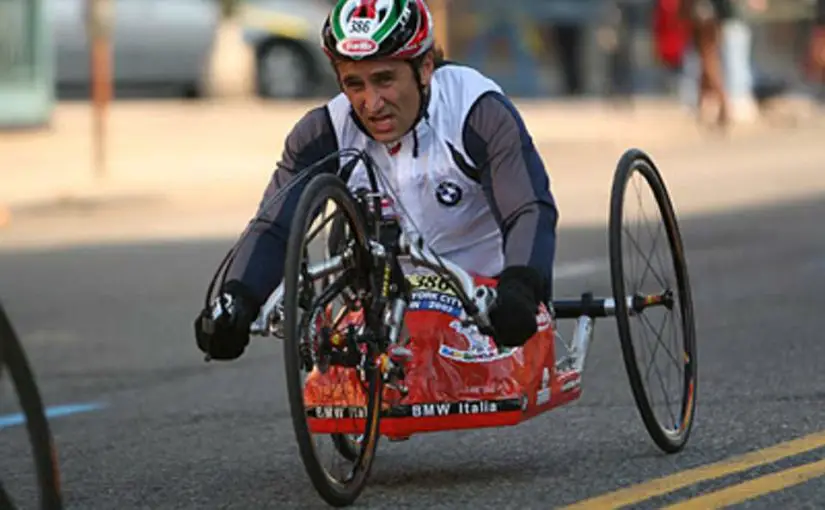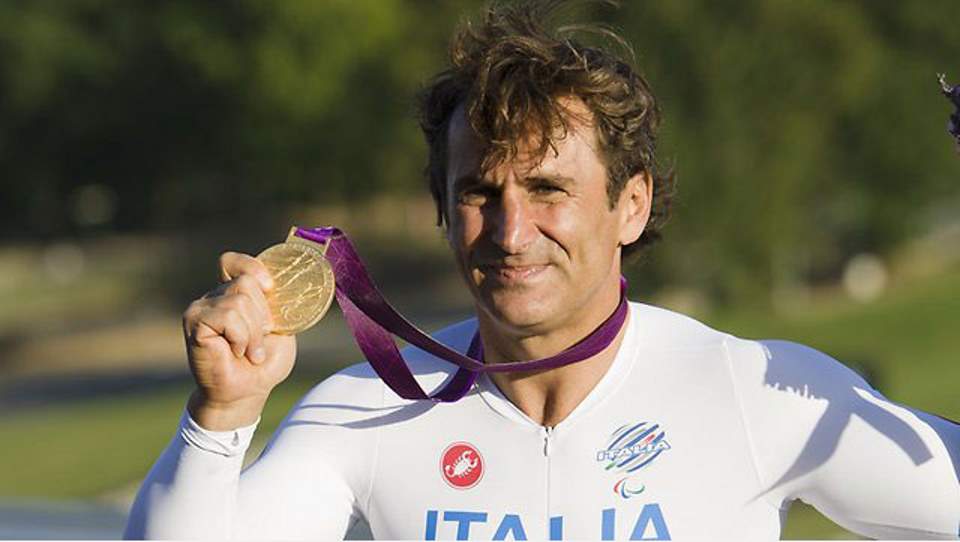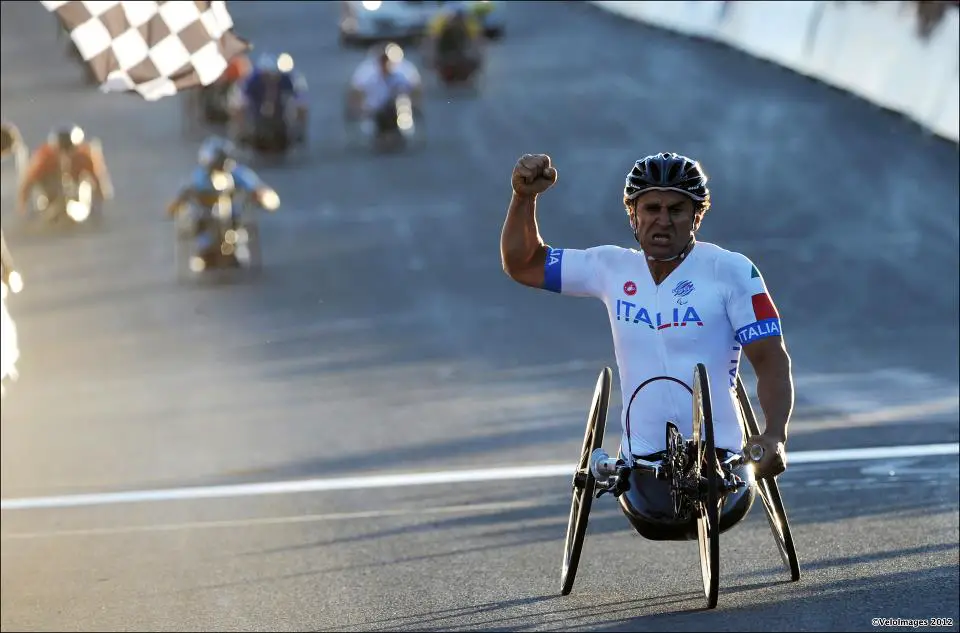Alex Zanardi (Alessandro Zanardi), the former F1 driver is a gold medal contender at the London Paralympics, eleven years after losing his legs. The 45-year-old Italian knows the track inside out from his days driving around it at 320kph (200mph).
Alex Zanardi’s horrific crash
On September 15, 2001, at the EuroSpeedway Lausitzring, Germany, Zanardi, two-times Champ Car racing champion who also drove for the Lotus Formula One team, was leading the CART race in the closing laps. After a late pit stop, Zanardi was attempting to merge back onto the track. But he accelerated, lost his car’s control and stalled on the track, spun into the path of Patrick Carpentier.
Carpentier was able to avoid hitting him, but Italian Alex Tagliani, who was just behind Carpentier at the time, could not, and Zanardi’s car was impacted from the side, behind the front wheel, where Zanardi’s legs lay down, severing the nose of the car.
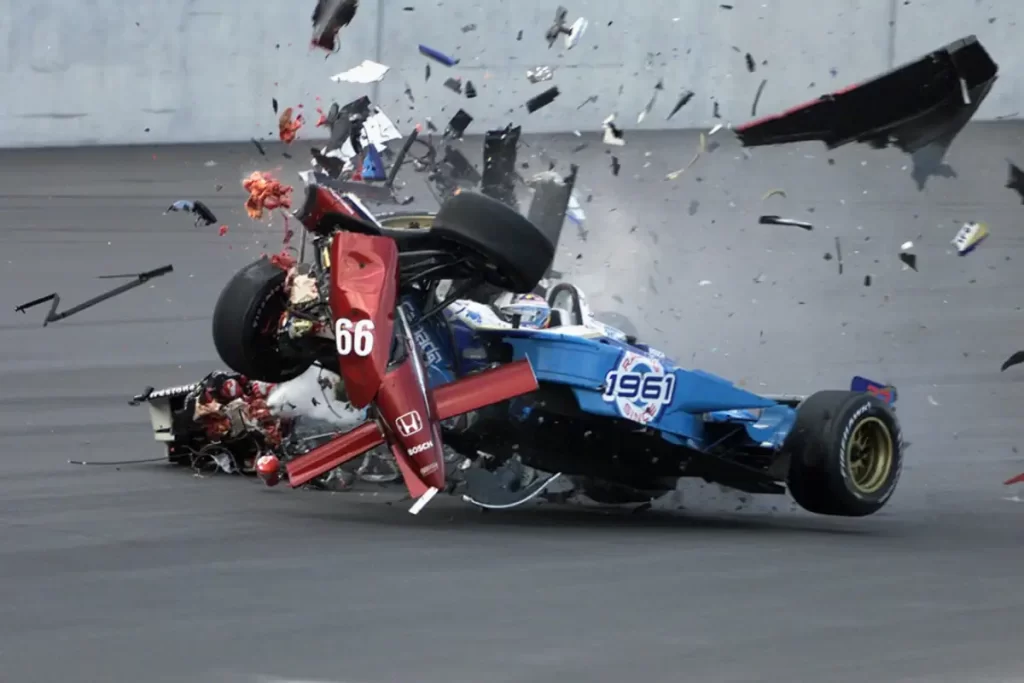
It was a dreadful moment. Zanardi lost both legs in the impact, one at and one above the knee. He also lost nearly three-quarters of his blood volume at the crash. Rapid medical intervention saved his life. Further portions of his legs were amputated during three hours of surgery to clean and facilitate closing the wounds. After being taken by helicopter to a Berlin hospital, the doctors were amazed he was still clinging on to life.
Years later, Zanardi said: “What saved me was the clean break. I could have easily died right there from the impact. They (doctors) compared my injuries to a Nasa study that charts the critical point beyond which a human body cannot survive and told me I was officially a dead man”.
Zanardi was fitted with two prosthetic limbs and began an ambitious rehabilitation program. He was determined to compete again the moment he woke from his coma. “The first thing I asked myself was ‘How am I going to do all the things I want to do with no legs?'” says Zanardi.
He designed and built his own bespoke legs: because he was dissatisfied with the limitations of legs available commercially. He designed legs to allow him to compare the weight and stiffness of various feet in order to find the most suitable for racing.
In 2002, in Toronto, Ontario, Canada, CART honored Zanardi by giving him the privilege of waving the checkered flag. In 2003, Zanardi was racing again, with the aid of hand-operated brake and accelerator controls. He completed the final thirteen laps at the race track which had nearly killed him in 2001 and did so at highly competitive speeds approaching 310 kph (193 mph). In fact, had he been qualifying for the race that weekend, he would have been fifth.
Zanardi competed at Monza, Italy, in his first race since the accident. He drove a touring car modified to allow the use of his prosthetic feet. He finished the race in seventh, which is quite an impressive result.
Zanardi returned to racing full-time in 2004. He competed for Roberto Ravaglia’s BMW Team Italy-Spain in the FIA European Touring Car Championship. He did not score many points in that season. But in 2005, on August 24, since his accident at Lausitzring, Zanardi won his first world series race. He took further wins at Istanbul in 2006 and Brno in 2008 and 2009. At the end of the 2009 season, he announced his retirement from the WTCC.
Zanardi also returned to a Formula One car in late November 2006 at a testing session for BMW Sauber in Valencia, Spain. The car had been specially adapted to have hand controls fitted on the steering wheel.
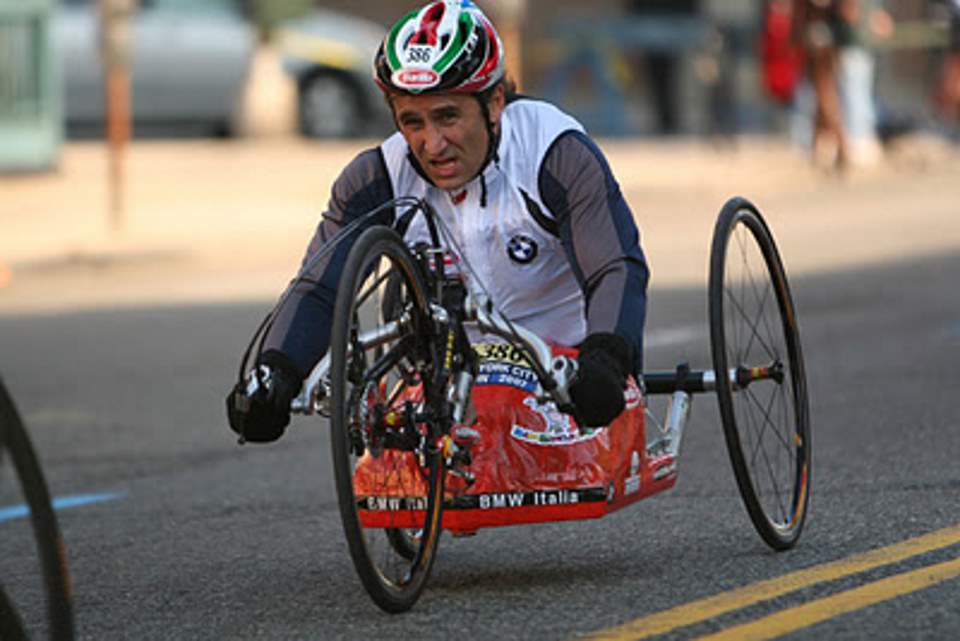
Looking for new challenges, Zanardi discovered hand bikes: where the pedals are turned by hands. After training for just four weeks, he took fourth place in the hand bike section of the New York City Marathon in 2007.
Then, in 2009, he retired from car racing with the aim of making Italy’s handbike team for Paralympics in Londo,n 2012. Last year, he won the New York marathon at his fourth attempt, where he narrowly beat Poland’s Rafal Wilk, a former speedway racer who also lost his legs in an accident.
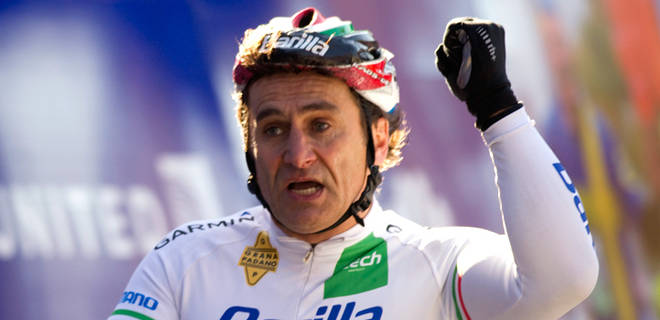
Zanardi says: “It’s not much different to Formula One where they are improving the cars constantly. The difference is every hand biker needs a different bike depending on their residual ability.”
In Paralympics 2012, hand bikers will race in one of four categories determined by the extent of their disability. Zanardi says: “I am H4, able to use my back so I can lean forward and get my body weight behind the pedaling. People who can’t move their back will be H1 to H3, and ride in a reclined position. They cannot use their body weight but they do get an aerodynamic advantage which makes them more efficient on the flat.”
“If some people could fly, Usain Bolt would feel disabled,” Zanardi says. “Doing the best with what I have is the biggest challenge.” He adds, laughingly: “Now I know that if I break a leg, all I need is a five-millimeter screw to fix it.”
Go, Zanardi. You’re an inspiration.
Video: Alex Zanardi’s horrific crash in 2001.
Sources
- Alex Zanardi on Wikipedia
- Fausto Coppi in Africa [A Very Rare Photo] - January 4, 2025
- Jacques Anquetil During the 1965 Bordeaux-Paris - December 13, 2024
- Colnago Unveils New Aero Bike for Tadej Pogačar and UAE Team Emirates: Colnago Y1Rs - December 9, 2024
